Missouri’s most delicious sport fish is a little wacky.
If you’re like most Missouri anglers, you’ve never caught a walleye on purpose. If you’ve eaten one, you probably wished you could get more. But the ways of the walleye are mysterious, and few Show-Me State anglers have cracked the code.
That’s because walleyes are a little wacky. They are active throughout winter, when most anglers are indoors. And while walleyes’ habits are similar to those of more popular game fish, they also differ in important ways.
The Lure
Some walleyes’ quirks result from their large, milky blue eyes, which are made for finding prey in low light. This sensitivity makes them shy of bright light. They retreat to deep water during the day, coming into shallower water to feed from dusk to dawn.
Fishing in low light calls for bright colors, like chartreuse and white. Jigs and spoons are great lures for working deep water where walleye lurk. Let these lures touch bottom, then raise your rod tip sharply a foot or two and let them fall back to the bottom. The trick to jigging is following the lure’s fall with your rod tip so you remain in touch and can feel the slight bump-bump of a bite. Low-stretch line and sensitive rods help. So does draping the line over your index finger.
If you try to set the hook when you feel a tap, you will pull the lure out of the fish’s mouth. Instead, lower your rod tip momentarily to give the fish time to mouth the lure, and then set the hook when it turns to swim away.
In the springtime, when the surface temperature of the water is below 60 degrees, you can catch walleyes in the middle of the day. Once water temperatures top 70 degrees, walleyes tend to feed in deep water. Even in the summer, however, they sometimes visit shallower water at night, especially on moonless nights.
Like crappie, walleyes are schooling fish. So when you hook one, it pays to mark the spot and fish it again. Walleyes share black bass’ taste for crayfish and small fish. But unlike bass, walleyes have a strong preference for fish. They also are more finicky than bass, which eagerly snap up artificial lures without special enticements. Walleyes, on the other hand, are much more likely to grab a minnow imitation if the trailing hook is decorated with half a night crawler.
The Conservation Department stocks 1 to 2 million walleye fingerlings in Missouri lakes and streams each year. These fish, plus those spawned naturally, are so widely distributed, it might be simpler to list the places where not to look for them.
Here are a few of the state’s top walleye lakes and streams, along with fishing tips that can be used on similar waters .
Lakes
Stockton Lake is a walleye standout. Angler Marty Thompson uses a sonar graph to help him find Stockton’s abundant walleyes. He scans the screen for black balls that represent schools of gizzard shad. Walleyes follow these schools like wolves stalking herds of grazing animals. The “wolves” show up as crescent shapes on Thompson’s fish graph. Blurred crescents mean fastmoving fish feeding on shad.
Stockton’s water chills down into the 40s during the winter. Because shad prefer warmer water, Thompson often finds them around submerged springs during the winter. When the wind blows out of the south for a few days in a row, it pushes microscopic food that shad eat toward the dam at the lake’s north end.
“You can use the current that the wind creates to your advantage,” says Thompson. “Walleye will be on submerged rocky points and bluffs, grazing on passing schools of shad.” He said fishing 20 to 30 feet deep along bluffs at such times also can be very effective. Bluffs are favorite walleye hangouts because the shade they create prolongs twilight until nearly mid-day.
Lake walleyes also gather around submerged humps. These spots permit walleyes to forage in shallower areas without having to move far from the security of deep water. Also, humps tend to be rocky or gravel-covered.
Thompson fishes spoons or jigs with white or chartreuse curly-tailed jigs. He trolls these rigs at 1 to 1.5 mph. Often he can do this by drifting with the wind. He monitors his speed with his fish graph’s GPS function and uses his trolling or main motor when necessary to maintain the desired pace.
In February or March, Stockton’s walleyes move up the arms of the lake to spawn. A warm rain this time of year can spark enough activity to allow even inexperienced walleye anglers to catch fish. Rocky points south of the dam and the rock-lined surface of the dam itself also can be productive this time of year.
Not all walleye lakes are big. MDC Fisheries Management Biologist Travis Moore says the best walleye spot in northeast Missouri is Lake Show-Me in Scotland County. To find the walleye hot spot near you, visit short.mdc.mo.gov/Z3G.
Streams
The Mississippi River is among Missouri’s top walleye streams. In the winter, the best approach is fishing from a boat below one of the dams north of St. Louis. Focus on places where slack water and current meet. Hidden in the Mississippi’s murky water are gravel humps and sandbars where walleyes hang out. Use sonar to find these, and anchor downstream. Then bounce lures around submerged humps where the water is 5 to 15 feet deep.
Below the dams, walleye action drops off as April nears. After that, walleye can be found foraging along the leading edges of wing dikes from dusk to dawn. They retreat to scour holes on the downstream side during the day.
Crankbaits are a good choice for these spots, which tend to snag lures that touch bottom.
Dozens of smaller Missouri streams offer excellent walleye fishing. The Black and lower Current rivers are your best bets for big ’eyes. In these streams, walleyes inhabit deep pools, deep, swift runs, and where riffles enter pools. The mouths of feeder streams and the deep sides of sharp bends also are walleye hangouts. Retired Fisheries Biologist Tom Russell found walleyes on the Current River preferred pools at least 12 feet deep with boulder-lined bottoms. This last detail is significant because walleyes are sight predators, so they prefer clear water. They like areas where the current keeps silt from settling on sand, gravel, or rock bottoms.
Walleyes make spring spawning runs upstream from nearly all of Missouri’s big reservoirs when water temperatures are between 40 and 50 degrees. At Mark Twain Lake, the north and south forks of the Salt River are best. Stockton Lake’s walleye spawning run culminates in riffles where the Little Sac River and Turnback Creek enter the lake. Spawning runs also occur on the Kings River arm of Table Rock Lake and below Lake Taneycomo, Clearwater and Bagnell dams. Bank anglers will find good opportunities below Clearwater Dam and at the Hendrickson Access off Highway 67 north of Poplar Bluff.
If you succeed in breaking the walleye code, why not give the walleye encrusted recipe from Cooking Wild in Missouri a try. The cookbook is available at Conservation Department regional offices, nature centers, or from the online Nature Shop at mdcnatureshop.com. For recipes online, visit short.mdc.mo.gov/Z3U.
Doing the Lindy Hop
The quintessential walleye lure is the Lindy Rig, named for its inventor, Al Lindner, a walleye fishing legend. It starts with a “walking” sinker slipped onto the line above a barrel swivel. To the other end of the swivel, tie 18 inches of light monofilament with a tiny float attached. A No. 4 hook with a night crawler or small minnow finishes the rig. The walking sinker minimizes snagging, while holding your bait near the bottom. The float holds the bait at eye level for fish lying just off the bottom, where it wriggles enticingly.
Walleye Encrusted with Breadcrumbs and Almonds
Serves 2
- 1-pound walleye fillet
- ½ cup almonds
- ½ cup breadcrumbs
- 1 tablespoon unsalted butter, melted
- 2 tablespoons Dijon mustard
- 1 tablespoon parsley
- 2 tablespoons Parmigiano-Reggiano cheese, finely grated
- 1 tablespoon extra-virgin olive oil
- Salt and freshly ground pepper
Preheat oven to 350ºF. Generously oil a broiler pan and place fish in the pan flesh side up. Sprinkle with salt and pepper. In a food processor, mix nuts and breadcrumbs until nuts are finely chopped, and then transfer to a bowl. Mix in butter, mustard, parsley and cheese. Gently press the crumb mixture onto the fish, covering entire fillet on one side. Drizzle the olive oil over the fillet and bake until flesh is opaque.
Raise your oven rack and preheat broiler. Broil fish until crust is golden. Don’t take your eyes off the fish while it is under the broiler. The crust browns rapidly, and — depending upon your broiler and the distance between the heat source and the fish — you should have a golden crust within a minute or two.
Serve the fish with lemon wedges and a quick sauce made with plain yogurt, fresh minced dill and a few squirts of fresh lemon juice. Accompany with new potatoes and fresh, edible-pod peas tossed together with fresh herbs and butter.
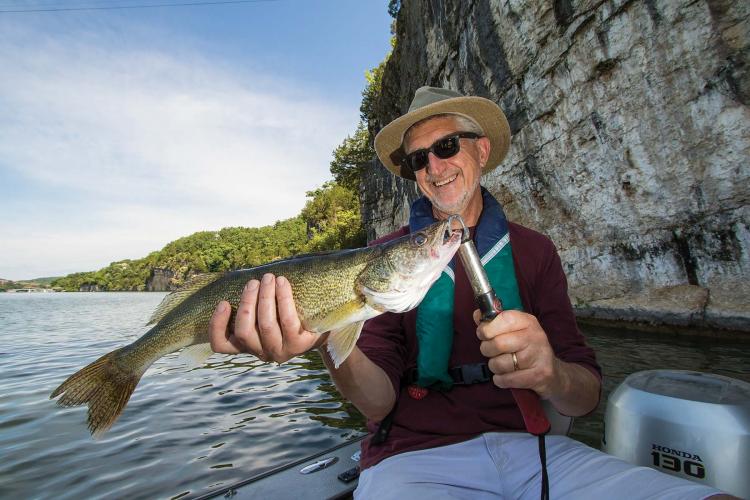
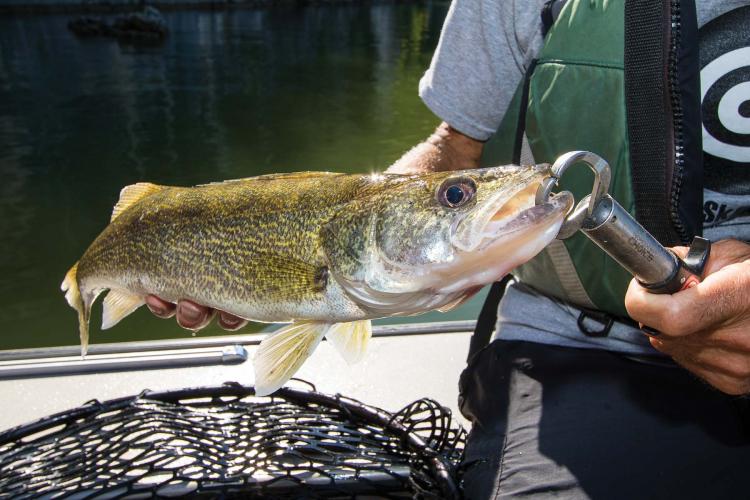




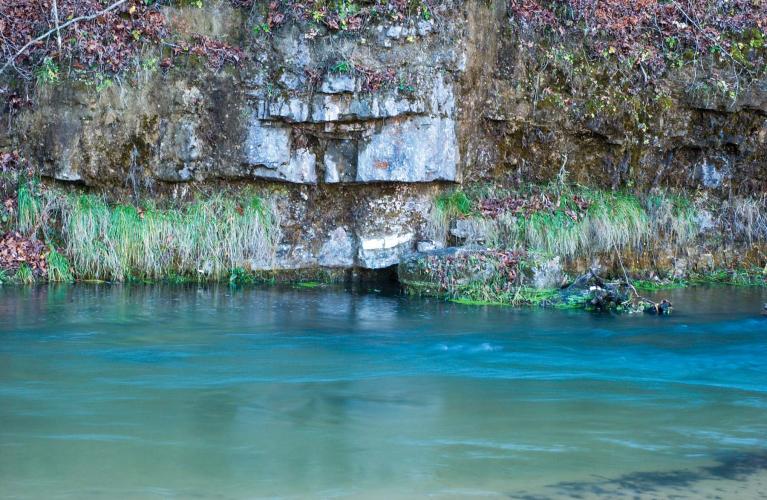


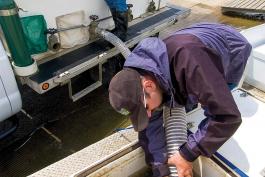
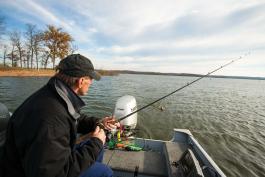
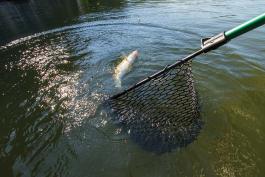


And More...
This Issue's Staff
Art Director - Cliff White
Associate Editor - Bonnie Chasteen
Staff Writer - Heather Feeler
Staff Writer - Kristie Hilgedick
Staff Writer - Joe Jerek
Photographer - Noppadol Paothong
Photographer - David Stonner
Designer - Les Fortenberry
Designer - Marci Porter
Designer - Stephanie Thurber
Circulation - Laura Scheuler






















